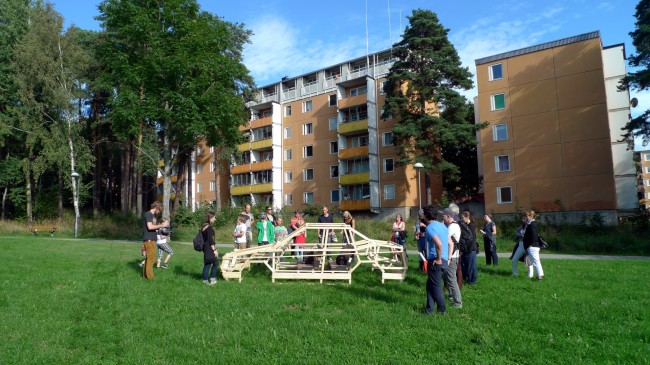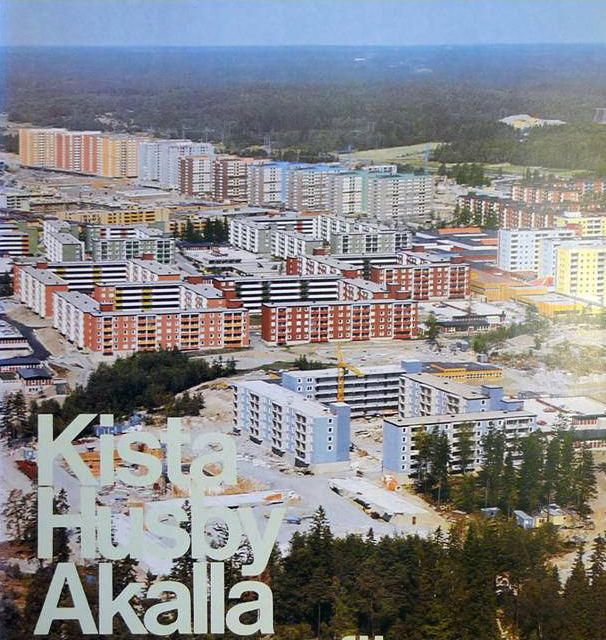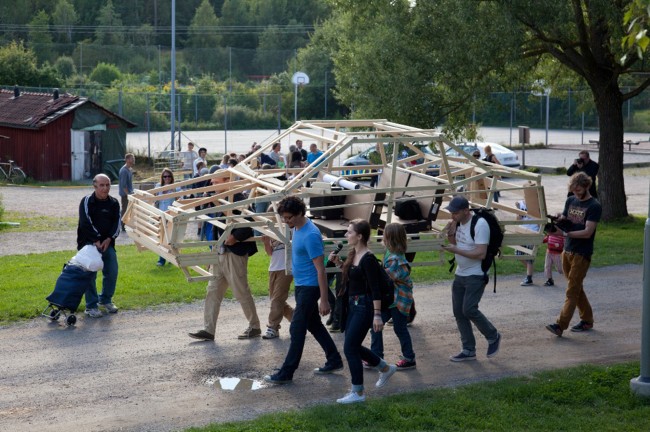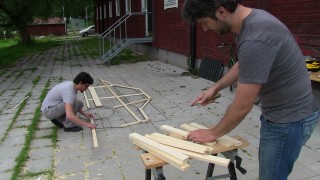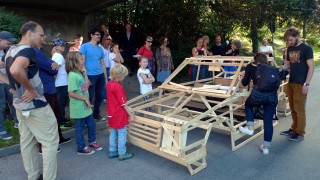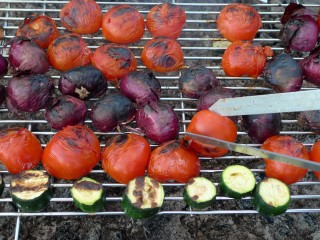Husby Channel is part of ongoing artistic research that experiments with construction of temporal commonality around the notion of value and public interest by developing media device to perform the emerging narrative and facilitate minor voices on the locale.
Building Car BBQ is an episode that is produced through a workshop that imagines “life after the car” – a hypothetical state where speed reduced for the sake of conversation and to imagine alternative scenarios in planning. Project intervenes zones of conflict escalated between the local inhabitants resisting redevelopment proposed by the city planners to “uplift” Husby, media stigmatized suburb in Stockholm, to “raise the value” and make it “more consumer attractive”.
Conceived as part of the Million Programme along with other neighbourhoods – Kista, Rinkeby, Tensta and Akalla, Husby is residential area developed “to create good democratic citizens”. This large suburban cluster is surrounded by Jarva – a green belt just twenty minutes on a subway away from downtown Stockholm. Informed by the success of early modernist suburbs like Vallingby, the planning in Husby proposed vertical separation of traffic and pedestrian grids, making this borough into continuous experience for walk and play. The effort invested into digging out the streets in the rock was combined with the natural terrain, whereas the rubble from excavating the streets was utilized forming several hills in the surrounding green belt. To emphasize idea of democracy and integration, the urban planners collaborated with artists to design playful visual perspectives setting the color codes as identities in these areas.
Since it was build in 70-ies this area became home for refugees escaping zones of conflict and war in Iran, Afghanistan, Irak, later Yugoslavia and Somalia. New immigrants adapted to Swedish modernist proposal making this typically homogenous areas into a peaceful retreat for multi-cultural others. Naturally the new settlers not only accepted the modernist planning idea of a garden city but also inhabited area with their own cultural assets like gardening culture, and oriental markets, community support and cultural centers, and with their own way to create public space.
As the area was growing the Swedish conservative media constructed public opinion. Images of burned-down cars and similar narratives of destructive character were building upon the stigmatizing criminal portrait of the area. In the recent debates city planners and developers use this media constructed image of suburban ghetto to build argument for gentrification and… uplifting of this area, so called Jarvalyftet project. It suggests to bring that excavated debris back to fill the dag out streets making “people to meet cars” with proposal to increase consumption culture in the area.
The technique of uplifting naturally has cost which is not affordable by refugees and immigrants. So the area that was home for several generations is becoming zone of confrontation between city planners and investors on one side and local citizens on the other.
Husby Channel project intervenes this conflict by proposing a local media device that would provide and facilitate new cultural narrative. Choosing a tour as medium to collect local minor narratives Husby Channel maps the crime scenes of burned down cars, and suggests to convert the stigmatizing violent image to the media device that would bring together local stories and through that construct commonality. Interviews are produced with local youth activists, founders of Iranian radio in opposition, gardening enthusiasts, police officer, municipal planner, cultural entrepreneur and architecture professor developing forms of radical pedagogy.
The building of the car is a workshop process that involves participants of a local rehab center welding the grill, local school pupils constructing the model of the automobile, community members helping to carry it throughout the suburb and finally burning it down as part of the block party grill.
The Husby Channel uses the dramatic structure of the television to problematize a notorious media image of this suburban area. Hereby, television episodes work as chronological course of actions; they take on the shape of a conducted tour to construct a new reality — an immersive universe. The wooden model of automobile is turned into the media device for those that are considered “black holes” of informational capitalism. Here the car model is turned into a character that follows the chronological course of actions to investigate the area of Husby and research its history of dissent. The audience helping to carry automobile follows the character, thus simultaneously observing and participating in the construction of several episodes. To increase the level of participation, the audience itself operates as the characters’ “Alter Ego”.
